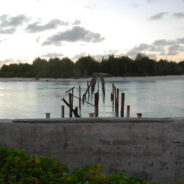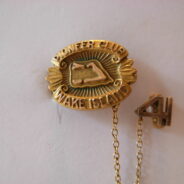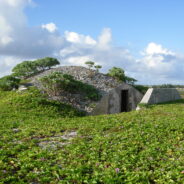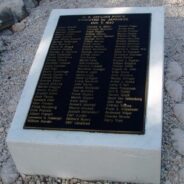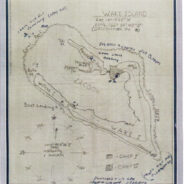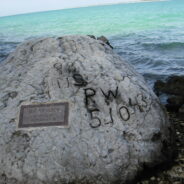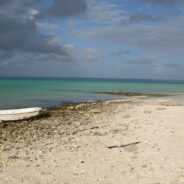Memory
Early in my book project I came to realize that I couldn’t rely on memory-based sources to augment the factual account of the Wake Island story. This came as a surprise to me as a history instructor who has often used oral histories to give voice to people without a written record. However, as I met Wake survivors and talked with them about their experiences, I found that their stories often conflicted with each other or with the historical record. I decided to focus as much as possible on written primary sources – letters, diaries, and other...
read moreTruman MacArthur Conference
On October 15, 1950, President Harry S Truman and General Douglas MacArthur met on Wake Island to confer about the Korean War and other matters. The Wake Island Conference was widely covered in the press and would have significant historical ramifications. All post-1950 biographies of these two powerful personalities address the conference in context and it regularly resurfaces in relation to current issues. Today, a plaque marks the location of the Truman-MacArthur meeting on Wake Island in the old terminal facility south of the airstrip. I...
read moreJPAC Mission: Wake 98
Among its many challenging missions worldwide, the Joint POW-MIA Accounting Command (now Defense POW-MIA Accounting Agency effective 1/1/2015) continues to pursue the Wake Island project: to identify remains that were found on Wake in 2011. It has been two years since the discovery on the north beach of Wake in a location near the generally-accepted site of the massacre of the American contractors on October 7, 1943. JPAC’s team of forensic anthropologists traveled to Wake to excavate the site, recover the remains, and bring them to the JPAC...
read moreHuman Cargo
During World War II thousands of American, Allied, and other prisoners of war were transported on ships to Japan or Japanese-held territory. Generally packed below decks into the ship holds like so much cargo, the prisoners endured such unspeakably vile conditions that many survivors recalled the voyage as the worst ordeal of their POW experience. In the ultimate irony of war, Allied forces bombed and torpedoed a number of these unmarked “hell ships,” unknowingly sending thousands of their countrymen to their deaths. Last week my colleague,...
read moreO Pioneers!
In 1899, the year that Commander E. D. Taussig took formal possession of Wake Island for the United States, journalist Margherita Hamm scoffed at the acquisition as a “mere dot on the waste of waters.” Early twentieth century surveys of the remote atoll revealed remains of old Japanese fishing camps and a shipwreck or two, but no evidence of permanent human habitation. Fishermen, feather-hunters, passers-by, and scientists did not stay long: with no fresh water or soil, Wake was not a very hospitable place. The first long-term pioneers were...
read moreShelter
The EF5 tornado that swept across Moore, Oklahoma, on Monday, May 20, left a trail of utter devastation in its wake. Quick to form and quick (relatively speaking) to dissipate, a tornado is the essence of unpredictability and violence. Recovery operations began immediately in Moore, focused on the rubble that minutes earlier had been an elementary school. As the initial shock gave way to grim purpose, a troubling question arose: why was there no storm shelter here? In hindsight, it is easy to agree that there are certain places and times...
read moreDXpedition
A group of dedicated and determined radio operators are headed for Wake Island in early October 2013 for a rare opportunity to transmit from this toehold of land in the mid-Pacific. The Wake Atoll Commemorative DXpedition is “dedicated to preserving the memory of the Forgotten 98 . . . who lost their lives on Wake Island on October 7, 1943 during World War II.” The operation, observing the seventieth anniversary of their deaths, honors these men, their contributions, and their sacrifice, and is dedicated to keeping their memory alive. As a...
read moreMapping Wake
When it comes to drawing a map of a place, Wake Island is about as easy as it gets. The small Pacific atoll is small, distinctive in shape, and practically begs the casual observer to try his hand at cartography. The familiar outline of Wake atoll has been variously described as a wishbone, horseshoe, or simply V-shaped, with the three islets – Peale, Wake proper, and Wilkes – flanking a shallow lagoon that opens wide to the west. During my research for Building for War I was drawn to the many maps of Wake that I encountered from hand-drawn...
read moreWake 98 Hero
Among the ninety-eight Americans murdered by the Japanese on Wake Island in 1943 was the civilian doctor, Lawton Shank, who had provided and coordinated vital medical services during the siege and battle of Wake in December 1941. Numerous sources attest to Dr. Shank’s continuing medical services through the difficult transition to captivity on Wake and, after the majority of prisoners were shipped out in January 1942, for the nearly four hundred Americans who remained on Wake for nine more months. When the last 265 prisoners to leave Wake...
read moreWake Beaches
For a small atoll of less than four square miles total land mass, Wake Island has a lot of beach. Together Wake, Peale and Wilkes form a narrow wishbone-shaped coral island that opens wide to the west. Linear distance tip to tip to tip is about ten miles, but altogether the coastline – including both sea-facing and lagoon shores – exceeds twenty miles. Comprised entirely of bleached, broken coral and ledges, none of it is “barefoot beach,” but it has a striking beauty all of its own. As the U.S. Marine detachment prepared defenses on Wake...
read more

